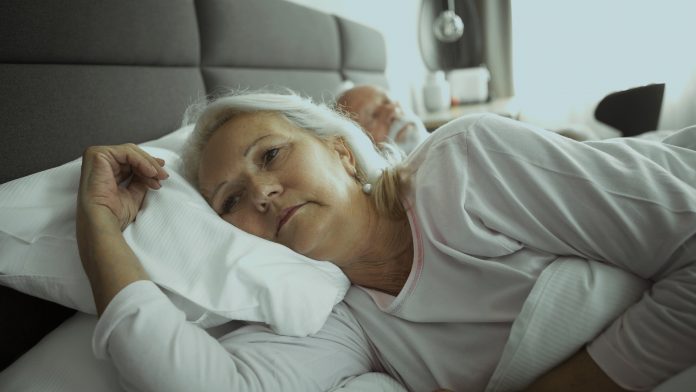
A study indicates that suvorexant, an insomnia treatment, could provide a novel therapeutic option for peri- and postmenopausal women.
Hot flashes and night sweats are common causes of insomnia amongst peri- and postmenopausal women. Insomnia treatment options are limited despite how common the disorder is.
Researchers at Brigham and Women’s Hospital carried out a randomised, double-blind, placebo-controlled clinical trial and discovered that an insomnia treatment called suvorexant was safe and efficacious, improving the condition and night sweats amongst peri- and postmenopausal women.
The results of the study are published in Sleep.
Investigating insomnia treatment options
Current insomnia treatment options include cognitive behavioural therapy (CBT) and medications such as nonbenzodiazepine GABA-A receptor modulators (these include commonly prescribed ‘Z drugs’ such as zolpidem/Ambien). Hormone therapy may also improve sleep in midlife women with insomnia related to night sweats. However, each insomnia treatment has its drawbacks, including constrained access and adherence to CBT recommendations as well as concerns about side effects of sedative drugs and hormone therapy.
The researchers designed their study to test suvorexant because of its promising mechanism of action. The drug acts by blocking the receptors for orexin, a neuropeptide involved in arousal and wakefulness and may also contribute to the occurrence of hot flashes. Previous studies have found that levels of orexin are three times higher in postmenopausal women than premenopausal women.
The research team conducted a four-week trial where 60 women aged between 40 and 65 randomly received either suvorexant or a placebo. Participants were assessed at in-person visits for insomnia severity and kept a diary recording of their hot flashes and night sweats.
What did the study find?
Insomnia symptom severity was scored using the Insomnia Severity Index (ISI). The decline in symptom severity at the end of the four-week trial, compared to baseline, was greater in the group that received the insomnia treatment suvorexant than in the group that received placebo (a decrease of 8.1 versus 5.6 points on the ISI), a meaningful and significant difference. The number of night sweats also decreased significantly for the insomnia treatment group compared to the control group. Daytime hot flashes and other related symptoms did not differ between the groups.
“Our study shows that there is a well-tolerated treatment that’s now available to treat chronic insomnia in peri- and postmenopausal women that may also help reduce night sweats,” said Shadab Rahman, PhD, MPH, of the Division of Sleep and Circadian Disorders and Mary Horrigan Connors Center for Women’s Health and Gender Biology. “Our results are promising in the population we studied and there’s a strong biological explanation for why we may be seeing improvements in reported insomnia as well as night sweats.”
The authors noted that their sample size for the study was small, limiting their ability to detect changes in other secondary sleep outcomes after adjusting for multiple testing. In the future, Rahman hopes to validate the findings by conducting a study in a larger population and seeing whether improvements in insomnia severity and night sweats lead to improvements in health problems for women that are closely related, such as metabolism and cardiovascular disease.
“This study sends an important message to midlife women that there is an expanded repertoire of treatments available to help with their insomnia. So many women suffer with insomnia because of their night sweats and they don’t seek treatment or know that safe and effective options are available to them,” said Hadine Joffe, MD, MSc, senior author on the study and executive director of the Connors Center, Paula A. Johnson Professor of Psychiatry in the Field of Women’s Health and executive vice chair for academic and faculty affairs in the Department of Psychiatry.

























